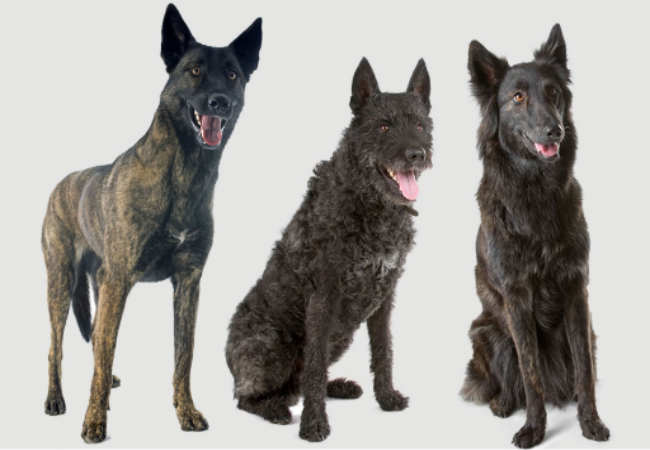Hereditary Non‑Inflammatory Myopathy in Dogs Vet Guide 2025 🐾

In this article
Hereditary Non‑Inflammatory Myopathy in Dogs Vet Guide 2025 🐾
By Dr. Duncan Houston BVSc
📘 What Is Hereditary Non‑Inflammatory Myopathy?
Hereditary non-inflammatory myopathy—also known as centronuclear myopathy (CNM)—is a genetic muscle disease primarily seen in young dogs, especially Labrador Retrievers, Great Danes, and select breeds. Characterized by a deficiency in type II muscle fibers and internalized cell nuclei, it causes muscle weakness without inflammation.
🐶 Breeds Most Commonly Affected
- Labrador Retrievers (yellow & black) – CNM is autosomal recessive, symptoms start at 3–6 months.
- Great Danes – similar non-inflammatory myopathy with tremors & weakness.
- Other breeds: Bouviers, Samoyeds, Terriers (X-linked dystrophin deficiency), German Shepherds, Akitas (metabolic variants).
🩺 Common Clinical Signs
Symptoms usually appear between 2–6 months:
- Muscle weakness, exercise intolerance, floppy “bunny‑hop” gait in rear legs.
- Arched or “sway” back, neck ventroflexion during excitability or cold.
- Sudden collapse, excessive resting, abnormal joint posture.
- Swollen tongue, megaesophagus, regurgitation, aspiration risk.
- Breed-specific signs like tremors in Great Danes, metabolic signs (vomiting, cramps) in German Shepherds, Akitas.
🔍 How Is It Diagnosed?
The diagnostic approach includes:
- History & Physical Exam: onset, breed risk, changes with cold/excitement.
- Blood Tests: mild to moderate elevations in creatine kinase (CK).
- Electromyography (EMG): detects spontaneous muscle activity.
- Muscle Biopsy: shows central nuclei, fiber atrophy/regeneration, fibrosis.
- Genetic Testing: DNA panels are now available to detect CNM mutations and rule out X-linked or metabolic myopathies.
🛠️ Treatment & Supportive Care
No definitive cure exists, but comprehensive care helps improve quality of life:
- Keep Warm: cold exacerbates symptoms—provide heated spaces, warm bedding.
- Supplements: L-carnitine may support muscle metabolism.
- Medications: Diazepam (for stiffness), rarely glucocorticoids in metabolic/inflammatory cases.
- Physiotherapy: gentle assisted exercise, hydrotherapy, and massage to maintain mobility.
- Nutrition: high-quality protein, joint-supporting omega‑3s, easily digestible diets. Ask A Vet’s nutrition tool can tailor meals to keep muscles nourished. 🥩
- Aspiration Prevention: elevate feeding bowls, smaller meals; Ask A Vet’s recovery protocols help manage megaesophagus.
📅 Prognosis & Long‑Term Outlook
Severity varies:
- Labradors: clinical signs often stabilize around 1 year; many live relatively normal lives with lower activity.
- Great Danes: muscular tremors and weakness may persist; supportive care is key.
- Metabolic or inflammatory variants: variable prognosis depending on enzyme defects or immune involvement.
- Breeding: strongly discouraged in affected or carrier dogs to prevent genetic spread.
📋 Practical Owner Tips
- Track CK via your vet—ask Ask A Vet for remote monitoring assistance.
- Home physiotherapy: gentle walks, stretching, and massage to maintain muscle flexibility.
- Adjust home: non-slip floors, ramps, raised beds.
- Stress reduction: avoid cold, exercise in short increments, and use calm training methods.
- Insurance: Consider supporting long-term veterinary and rehab costs.
🧬 Ask A Vet & Service Integration
For personalized guidance:
- Discuss using Ask A Vet’s telehealth for muscle weakness follow-up.
🏁 Conclusion
Centronuclear myopathy is a lifelong but manageable condition with early diagnosis, thoughtful care, and genetic screening. Many affected dogs enjoy happy, quality lives with proper adaptation, nutrition, and warmth. Your vet team—including Ask A Vet—is here to support every step.
Dr Duncan Houston BVSc, Ask A Vet founder, signing off. Don't forget to download the Ask A Vet app for on‑the‑go expert support, 24/7. Stay proactive, stay paw‑sitive! 🐾






